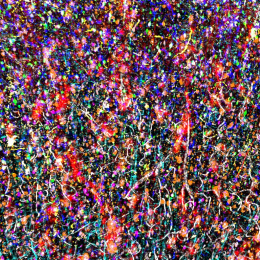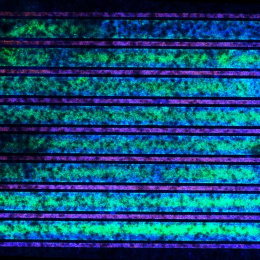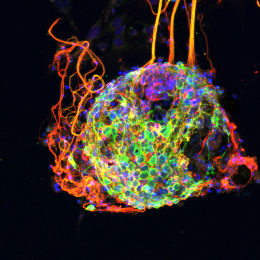Astrocyte Highways 2
Astrocyte Highways 2
Anna Jagielska, Ming Yang, Krystyn Van Vliet
Harvard-MIT Division of Health Sciences and Technology, MIT Department of Materials Science and Engineering
These images show glial cells (human and rodent oligodendrocytes, astrocytes and microglia) interacting with engineered synthetic 3D-printed Artificial Axons, mimicking biological axons of neurons. Artificial Axons, the first fully controllable synthetic axon mimics, were developed at the Van Vliet lab by A. Jagielska and others to study vital process of myelination and the interaction of glial cells with axons, in the tunable in vitro settings. Artificial Axons are currently used for drug discovery of compounds to promote myelin repair in Multiple Sclerosis and to study myelin disorders in Alzheimer’s disease.
These images were taken to see at high magnification how glial cells engage with axons. In case of oligodendrocytes, our goal was to demonstrate that these cells can wrap myelin membrane on the 3D-printed mimics of axons, as it happens in the Central Nervous System (CNS).






